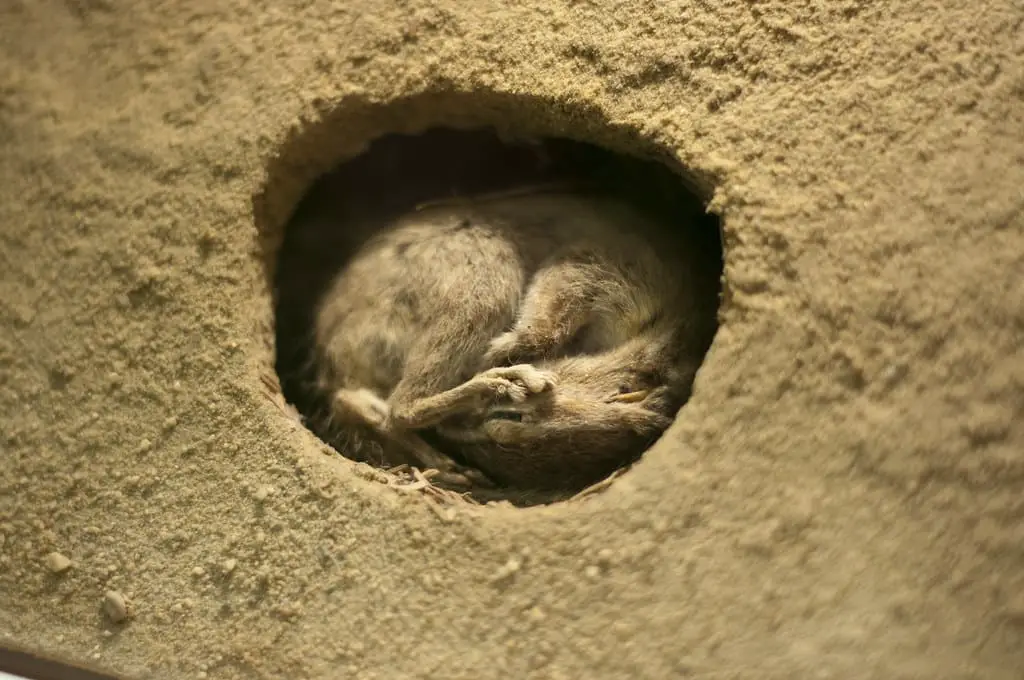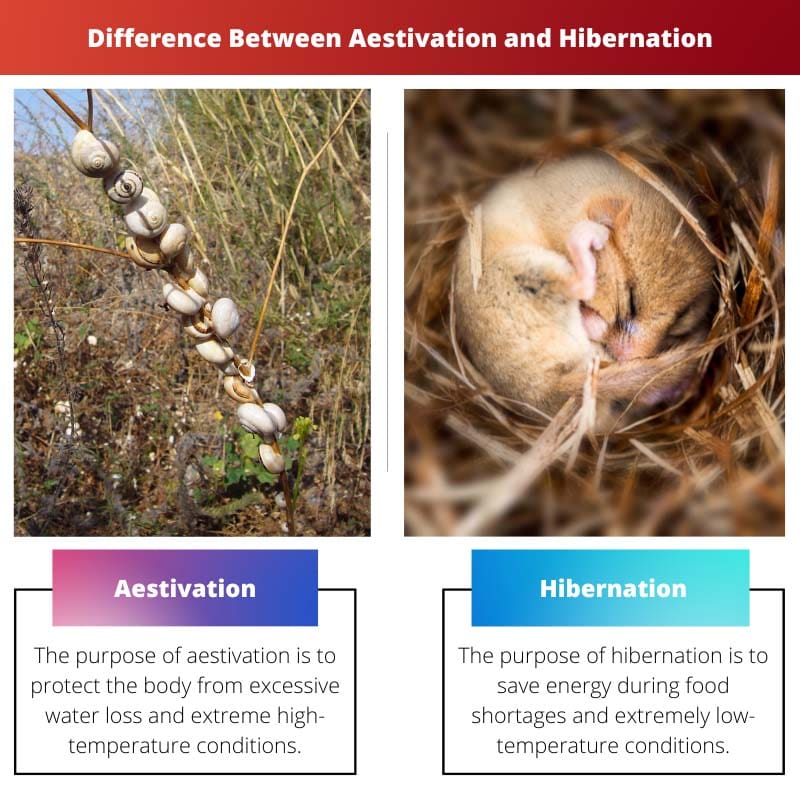Animals have several different ways to protect themselves in different types of conditions. For example, camouflage is a technique from which animals can protect themselves by mixing their physical features into the background.
However, temperature and weather can also have a large impact on the body of animals. Both extreme high temperatures and extremely low temperatures can cause severe damage and changes to the body.
So to protect themselves from the extreme temperature conditions, animals follow the process of aestivation or hibernation.
Key Takeaways
- Aestivation is a state of dormancy during hot, dry periods to conserve energy and water, while hibernation is a similar state during cold, harsh conditions to conserve energy and survive extreme temperatures.
- Aestivation is observed in various animals, such as snails, reptiles, and amphibians, while hibernation is common among mammals, reptiles, and some insects.
- Both aestivation and hibernation are adaptive strategies that allow animals to survive unfavorable environmental conditions by reducing metabolic rates and energy consumption.
Aestivation vs Hibernation
The difference between aestivation and hibernation is that the purpose of aestivation is to protect the body from excessive water loss during extremely high-temperature conditions, such as in desserts. On the other hand, the purpose of hibernation is to prevent the body from internal body damage during extremely low-temperature conditions such as in the poles.

Aestivation, also known as summer sleep, is a method through which animals protect their body from high temperatures. During aestivation, animals go to deep sleep in a cool, shady place such as underground.
Aestivation is done by invertebrates and vertebrates as well. During aestivation, consumption of oxygen decreases, which consequently results in a lower metabolism rate of the body.
Extreme cold temperatures can cause internal damage to the body such as the bursting of arteries which causes internal bleeding and ultimately death.
So to protect the body from internal damages and save energy during low temperatures, hibernation is done by animals.
Comparison Table
| Parameters of comparison | Aestivation | Hibernation |
|---|---|---|
| Purpose | The purpose of aestivation is to protect the body from excessive water loss and extreme high-temperature conditions. | The purpose of hibernation is to save energy during food shortages and extremely low-temperature conditions. |
| Also known as | Another name for aestivation is summer sleep. | Another name for aestivation is winter sleep. |
| Region | Aestivation mainly occurs in arid regions such as deserts. | Hibernation mainly occurs in polar regions, tropic cancer regions, and Arctic Circle regions. |
| Time | Aestivation happens for a shorter duration of time as compared to hibernation. | Hibernation occurs for a longer duration of time as compared to aestivation. |
| Performed by | Some of the most common animals who perform aestivation are frogs, earthworms, snails, etc. | Some of the most common animals who perform hibernation are bats, birds, mammals, etc. |
What is Aestivation?
High temperatures and dry conditions can affect animals adversely. Such conditions can cause excessive water loss in animals which can result in dehydration and even death in severe cases.
Apart from that, high temperatures can cause internal damage in the body and several other changes as well such as higher metabolism rate, high blood pressure, and more.
To protect the body from excessive water loss and prevent such conditions to occur in the body, animals follow a process through which their metabolism rate of the body decreases.
As a result, the body does not consume a lot of energy, instead, it works well conserving the energy which consequently results in lesser consumption of water.
Moreover, since the body does not have a high metabolism rate, the blood pressure of the body does not increase and consequently, no internal damage in the body is caused. This complete process is known as aestivation.
In the process of aestivation, the animals find a cool and shady place where the temperature remains lower as compared to the external temperature of the atmosphere.
Once the place is found, the animal goes to sleep and wakes up after certain intervals of time to have food. Once the animal completes feeding, it immediately goes back to sleep to save as much energy as possible.

What is Hibernation?
Shortage of food is a very common problem that animals face, especially during cold temperatures.
Food is a necessity for survival, and the main role of food is to provide energy to the body to perform all the physiological functions such as metabolism regulation, digestion, and other such processes.
If food is not provided, then ultimately no energy is provided to the body. So to save their energy, animals adopt a process called hibernation.
During the process, the metabolism rate of the body of the animals reduces to a great extent. The major portion of the energy is spent on the regulation of metabolic processes.
As the metabolism rate decreases, the body takes up less energy. As a result, the energy gets stored in the body. As the energy is stored, the body requires less amount of food, which helps animals to survive without food.
Moreover, since the energy is stored in the body, it helps the body to generate a greater amount of internal heat which helps animals living in extremely cold weather, such as in the North pole, to survive the temperature.

Main Differences Between Aestivation and Hibernation
- Aestivation is done by animals to protect their internal body from any damage and to prevent excess water loss. On the other hand, hibernation is done by animals to protect their body from internal damages only.
- Aestivation is done during hot temperatures. On the contrary, hibernation is done during cold temperatures.
- Aestivation can happen only in cold-blooded animals. Whereas hibernation can be done by both types of animals, that is cold-blooded animals and warm-blooded animals.
- Animals perform aestivation in cool, moist, shady, and damp places. On the other hand, animals perform hibernation in warm places.
- Aestivation is done for a shorter duration of time as compared to hibernation. On the contrary, hibernation happens for a longer duration of time as compared to aestivation.

- https://www.sciencedirect.com/science/article/pii/S0960982213001310
- https://journals.physiology.org/doi/abs/10.1152/physrev.1955.35.2.403
